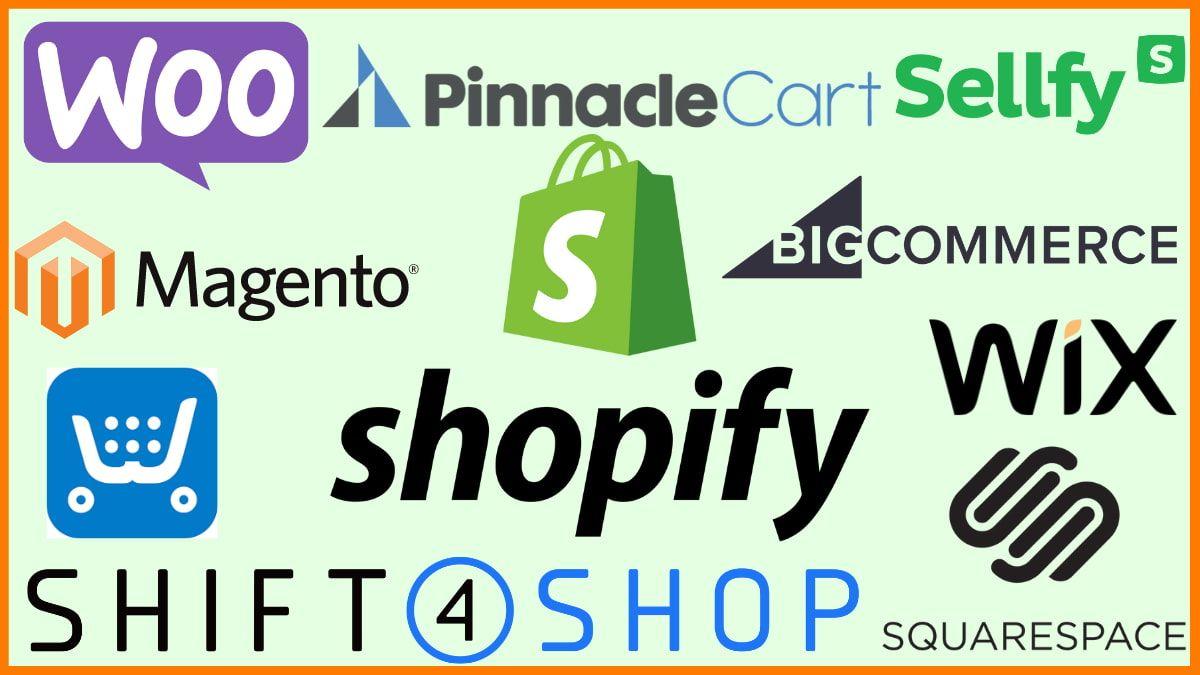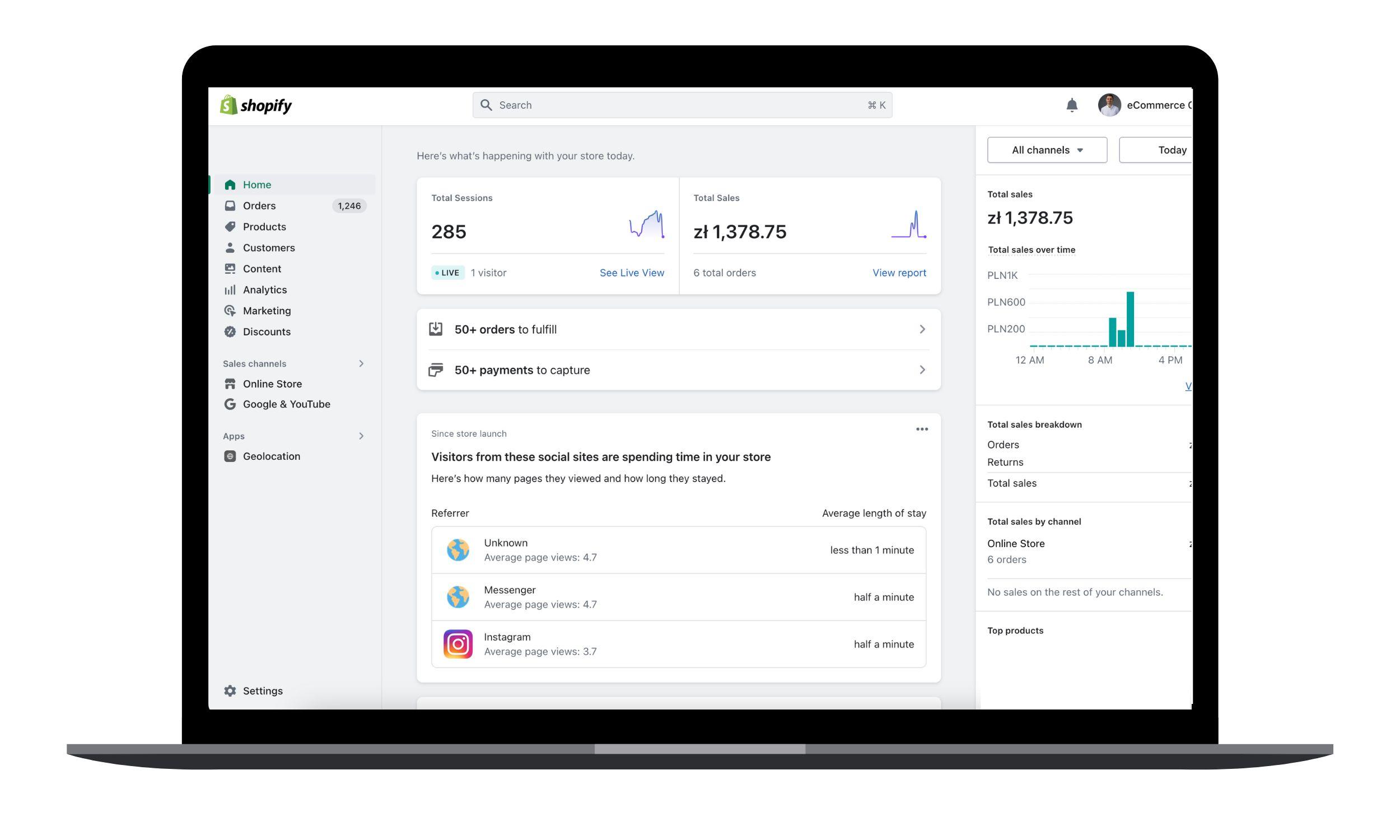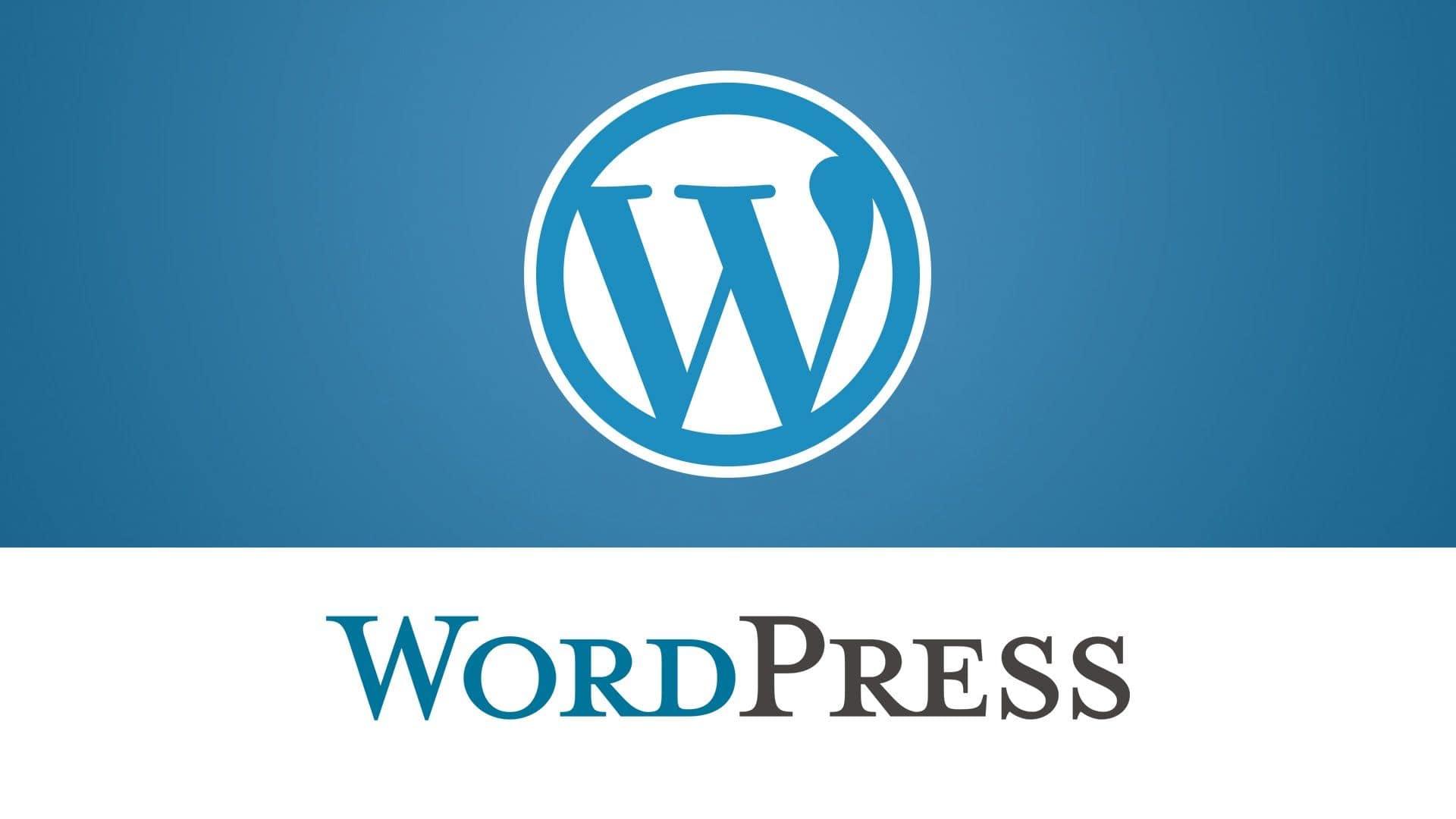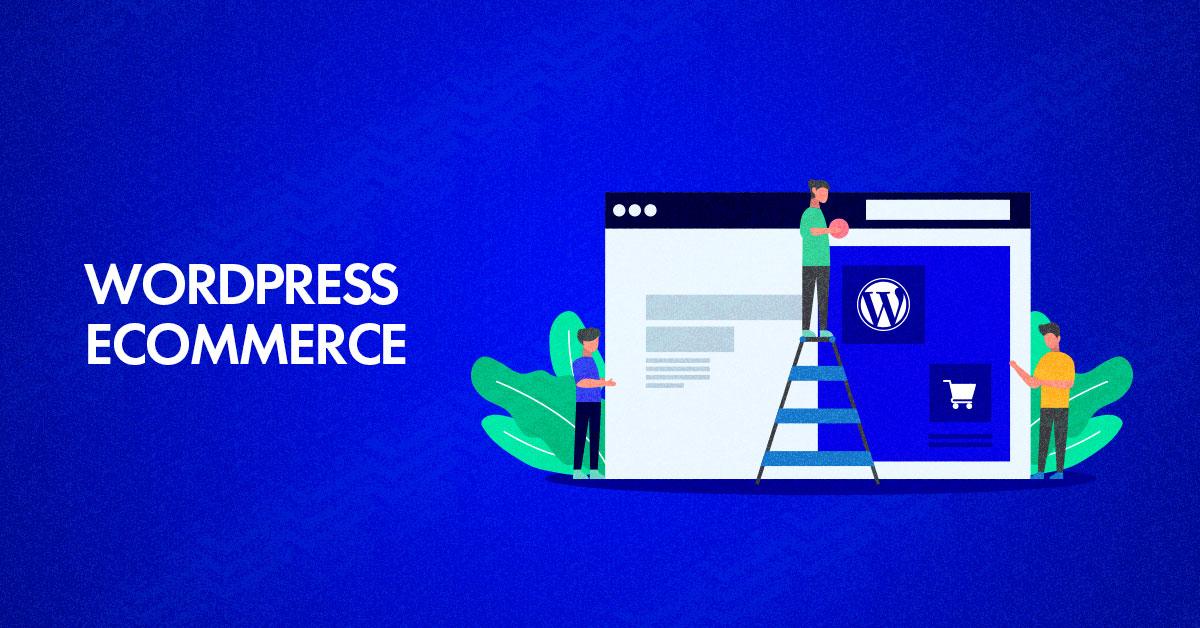Are you considering launching an eCommerce store but feeling a bit overwhelmed by the multitude of platforms out there? You’re not alone! Shopify has established itself as a giant in the eCommerce landscape,but it’s not the only game in town. Whether you’re a seasoned entrepreneur or just starting out, it’s crucial to explore all your options to find the platform that best fits your unique needs. In this article,we’ll dive into some of the best Shopify alternatives for eCommerce stores in 2021. From user-friendly interfaces to customizable features adn pricing plans that won’t break the bank, there’s a perfect solution waiting for you. So,let’s embark on this journey together and discover the alternatives that could elevate your online business to new heights!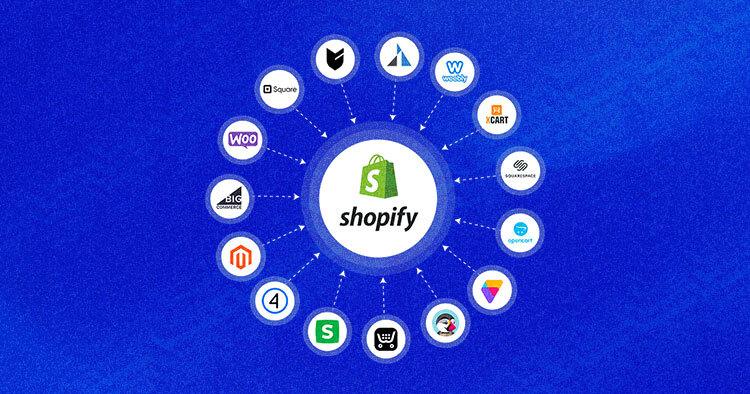
Exploring the Need for Shopify Alternatives in 2021
The eCommerce landscape is constantly evolving, and while Shopify has established itself as a go-to platform for many online entrepreneurs, it’s essential to consider alternatives that might better serve your specific needs. As we dive into 2021, a variety of factors are driving businesses to explore other options, from pricing structures and features to ease of use and customization capabilities.
One significant reason to look beyond Shopify is cost. Shopify’s tiered pricing model can become quite pricey as your business grows, especially when you factor in transaction fees and costs for additional apps. Alternatives like WooCommerce or BigCommerce can offer more flexible pricing structures, allowing you to scale without breaking the bank. Moreover, some platforms allow for greater control over your expenses, thus enabling better financial planning.
Another consideration is customization.shopify, while user-friendly, has its limitations when it comes to altering themes and functionality. For many brands, having a unique storefront that reflects their identity is crucial. Platforms such as WordPress with WooCommerce or Magento provide extensive customization options, allowing businesses to tailor their online presence to match their vision. This versatility can be a game-changer for brands looking to differentiate themselves in a crowded market.
additionally, SEO capabilities can vary considerably between platforms. Shopify has improved its SEO features over the years, but some alternatives offer more robust tools for organic search visibility. As an example, WooCommerce integrates seamlessly with WordPress, a platform renowned for its superior SEO capabilities, giving store owners the edge they need to climb the search engine rankings. Choosing an option that prioritizes SEO can lead to increased traffic and, consequently, more sales.
consider the support and community surrounding each platform.Shopify has a strong support system, but alternatives like WooCommerce have a vast user community that continuously shares tips, plugins, and troubleshooting advice.This collaborative environment can be invaluable for entrepreneurs who seek to optimize their store and compete effectively.When selecting an eCommerce platform, aligning with a community that resonates with your business goals can enhance your experience and success.
| Platform | Key Features | Best For |
|---|---|---|
| WooCommerce | Highly customizable, SEO-friendly, extensive plugins | Brands seeking flexibility and control |
| BigCommerce | No transaction fees, built-in features, scalable | Growing businesses with large product catalogs |
| Magento | Open-source, comprehensive customizability, strong security | Large enterprises with specific needs |
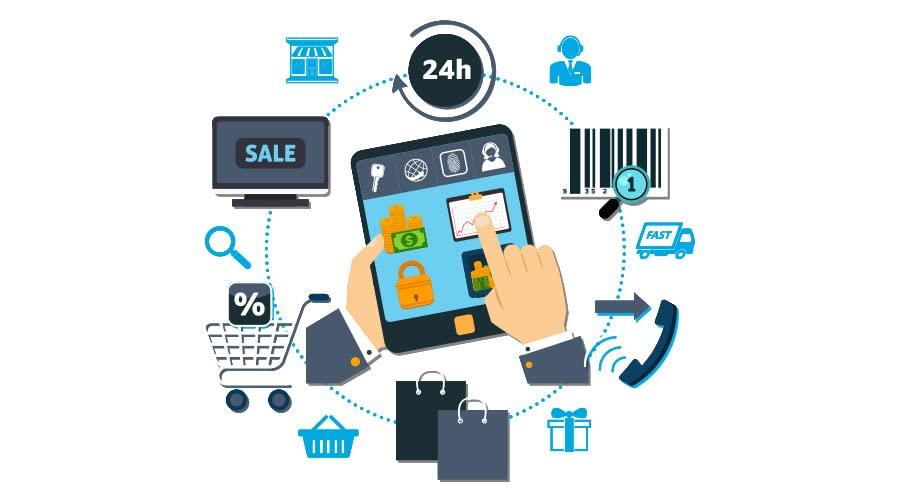
Diving into the Top Players in the Ecommerce Space
When it comes to ecommerce platforms, Shopify is undoubtedly one of the most recognized names.Though, for many entrepreneurs, its offerings may not align perfectly with their business needs. Thankfully, there are several competitive alternatives that provide unique features, flexibility, and pricing structures tailored to diverse requirements.
One of the standout options is WooCommerce, a powerful plugin for WordPress users. It seamlessly integrates with existing WordPress sites, offering all the customization capabilities one would expect from an open-source platform. Here’s what sets WooCommerce apart:
- Cost-effective: since it’s open-source, you only pay for hosting and any premium themes or plugins you choose.
- Full control: You have the freedom to customize your store to fit your brand perfectly.
- Vast community support: With countless resources and plugins available,you’re never alone on your ecommerce journey.
Another notable contender is BigCommerce, designed for businesses that anticipate rapid scale. It offers robust built-in features that ofen require extra plugins on other platforms. Here’s a quick look at its advantages:
| Feature | Benefit |
|---|---|
| Unlimited product variants | Perfect for diverse product lines. |
| No transaction fees | Keep more of your profits. |
| Multi-channel selling | Sell on platforms like Amazon and eBay effortlessly. |
For those seeking simplicity without sacrificing functionality, Squarespace presents an appealing option.Known for its stunning templates, Squarespace is ideal for visually-driven brands. Key benefits include:
- Stunning Design: Choose from award-winning templates that elevate your brand’s aesthetic.
- Integrated Marketing Tools: Boost your sales with built-in SEO, email marketing, and social sharing features.
Lastly, let’s not overlook Magento, a powerhouse for larger enterprises. With its extensive customization capabilities,it’s perfect for businesses that require a tailored solution. While it may have a steeper learning curve, the potential for growth is unmatched:
- Scalability: Magento grows with your business, supporting high-volume sales.
- Advanced features: Customizable checkout processes and inventory management tools help streamline operations.
while Shopify remains a strong choice for many, exploring these alternatives can lead you to the perfect fit for your ecommerce store. Each platform comes with its unique strengths, and taking the time to evaluate your options can make all the difference in your online success.
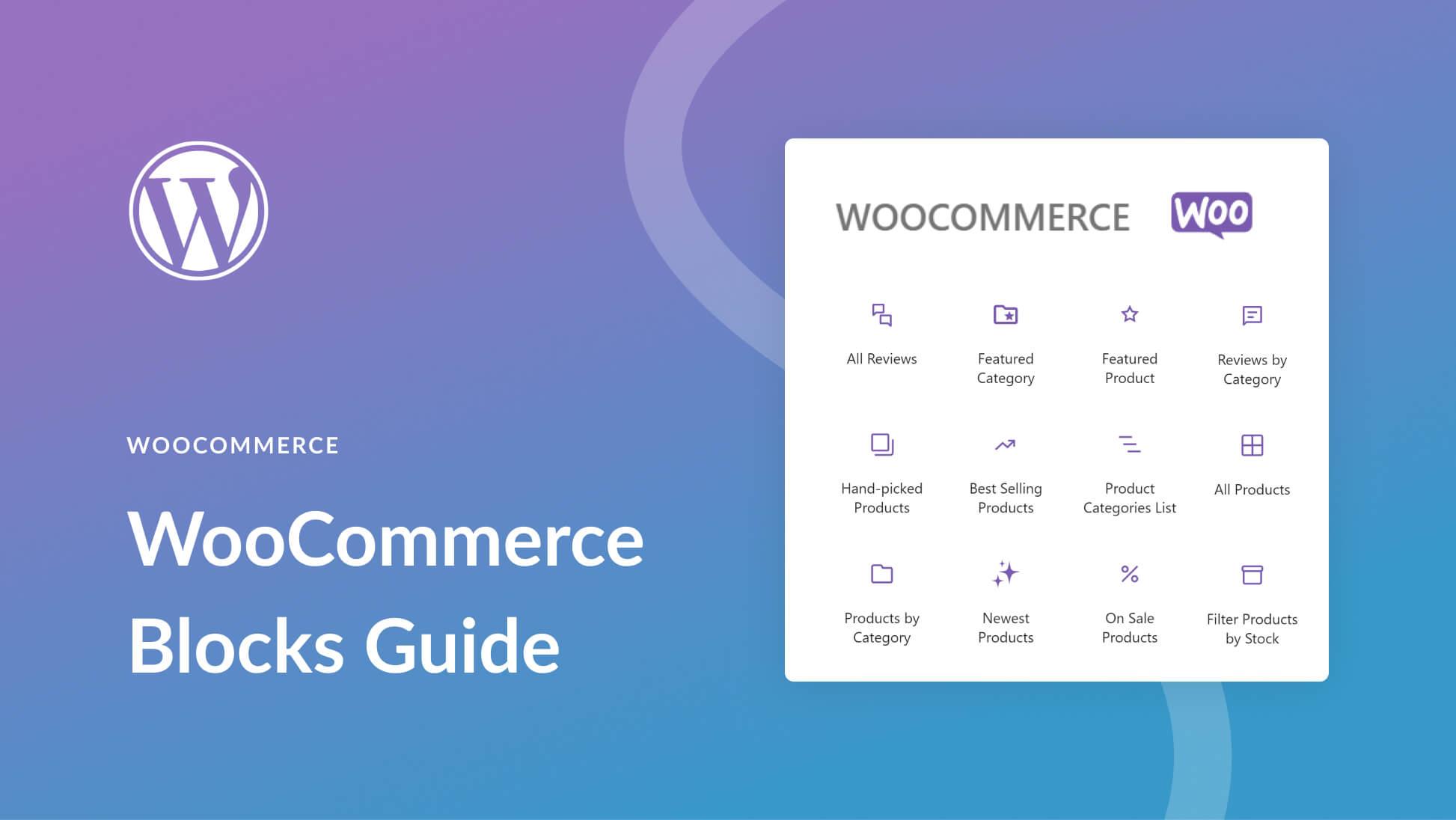
Why WooCommerce is a Game Changer for Small Businesses
when it comes to launching an online store, small businesses often face numerous challenges, from budget constraints to technical hurdles. WooCommerce stands out as a transformative solution that can empower these businesses to thrive in a competitive marketplace. Unlike traditional eCommerce platforms, WooCommerce operates as a plugin for wordpress, allowing you to leverage the power of one of the world’s most popular content management systems. This integration means that small business owners can harness a wealth of features without the need for extensive technical knowledge.
One of the most significant advantages of WooCommerce is its cost-effectiveness.Many small businesses operate on tight budgets, and WooCommerce offers an affordable entry point into the world of eCommerce.The core plugin is free, and while additional features may require paid extensions, the overall cost remains substantially lower compared to other eCommerce platforms. This allows businesses to allocate their resources more efficiently, investing in marketing and customer service instead of high operational costs.
Additionally, WooCommerce provides unrivaled customization options. Business owners can tailor their online store to meet their specific needs, whether it’s through unique themes, personalized functionalities, or custom shipping options. The vast library of plugins further enhances this flexibility, enabling businesses to scale and adapt their offerings as their customer base grows. With WooCommerce, you aren’t just stuck with a one-size-fits-all solution; you can create an online store that truly reflects your brand.
Another noteworthy feature is the robust analytics and reporting tools integrated into WooCommerce. For small businesses, understanding customer behavior and sales trends is crucial for strategic planning. WooCommerce provides detailed insights, allowing owners to track inventory, assess sales performance, and identify wich products are driving revenue. This real-time data equips small businesses with the knowledge they need to make informed decisions and stay ahead of the competition.
Lastly, the supportive community surrounding WooCommerce is a game changer for small businesses.From forums to dedicated resources, there’s a vast network of developers, designers, and fellow entrepreneurs ready to offer assistance. This strong community makes troubleshooting easier and fosters a learning environment where small businesses can gain insights and tips from others who have successfully navigated similar challenges.WooCommerce is more then just a plugin; it’s a comprehensive solution that addresses the unique needs of small businesses. Its affordability, customization capabilities, analytical tools, and supportive community create an ecosystem where small enterprises can not only survive but thrive in the ever-evolving landscape of eCommerce.
BigCommerce: The All-in-One Solution for Growing Stores
If you’re on the lookout for a robust platform to scale your eCommerce business, BigCommerce stands out as a premier choice. Its comprehensive suite of features is designed specifically for growing stores,making it an excellent alternative to Shopify.With an intuitive interface and powerful capabilities, it allows you to focus on what truly matters—growing your sales.
One of the standout benefits of BigCommerce is its built-in features that reduce the need for third-party apps. This means you can manage your store more efficiently while saving time and money. key features include:
- Advanced SEO Tools: Optimize your product pages with ease to improve search rankings.
- Multi-Channel Selling: Seamlessly integrate with platforms like Amazon and eBay.
- Robust Analytics: Gain insights into customer behavior to fine-tune your strategies.
BigCommerce also offers exceptional scalability, making it ideal for businesses that expect rapid growth. Whether you’re receiving a surge in traffic or expanding your product line, BigCommerce can handle the increased demands without compromising performance. Its cloud-based infrastructure ensures that your store operates smoothly, even during peak times.
Moreover, the platform is known for its strong security measures. With built-in HTTPS and PCI compliance, you can have peace of mind knowing that your customers’ data is secure. This can enhance customer trust and ultimately lead to higher conversion rates.
Lastly, BigCommerce provides a variety of customizable templates to ensure your store not only functions well but also looks stunning. Whether you’re a tech-savvy entrepreneur or just starting out, the user-friendly drag-and-drop builder simplifies the design process.
| Feature | BigCommerce | Shopify |
|---|---|---|
| Built-in Features | Yes | Limited |
| Scalability | High | Medium |
| Security | PCI Compliant | PCI Compliant |
| Customization Options | Extensive | Moderate |

Squarespace: Elevate Your Brand with Stunning Designs
In the competitive world of ecommerce, having an online store that stands out is crucial. That’s where a platform like Squarespace shines. with its visually stunning templates and easy-to-use design tools, you can create a unique brand presence that captivates customers. Whether you’re selling handmade crafts, clothing, or digital products, Squarespace allows you to showcase your offerings in a way that resonates with your audience.
One of the key advantages of using Squarespace is its integrated design features.You don’t need to be a coding expert to build a professional-looking site. The drag-and-drop functionality makes it simple to customize layouts, incorporate images, and create engaging content that reflects your brand’s personality. Plus, each template is responsive, ensuring that your ecommerce store looks great on any device.
Squarespace also provides a robust set of tools to enhance customer engagement. With features like built-in SEO,social media integration,and email marketing capabilities,you can easily drive traffic to your store and keep your customers in the loop about new products and promotions. Additionally, the analytics dashboard offers valuable insights into customer behavior, helping you make informed decisions to boost sales.
When comparing ecommerce platforms, it’s essential to consider factors such as pricing, scalability, and customer support. Here’s a brief comparison of Squarespace with some other popular alternatives:
| Platform | Starting Price | Best For |
|---|---|---|
| Squarespace | $12/month | Design-oriented businesses |
| Shopify | $29/month | Large inventories |
| Wix | $23/month | Small businesses |
| BigCommerce | $29.95/month | scalable ecommerce solutions |
Ultimately,choosing the right platform depends on your specific needs and goals. Squarespace’s all-in-one solution is particularly appealing for those who prioritize aesthetics and ease of use. With its notable design capabilities and comprehensive features, it’s a platform that can truly elevate your brand and take your ecommerce store to the next level.
Magento: Unleashing the Power of Customization
For ecommerce businesses seeking flexibility and scalability, Magento stands out as a powerful alternative that puts customization at the forefront. Unlike many out-of-the-box solutions, Magento offers a robust framework that allows online stores to tailor their functionalities according to unique business needs. This is particularly valuable in today’s competitive landscape, where differentiation can make or break success.
One of the most appealing aspects of Magento is its modular architecture. This structure lets developers create custom modules to enhance the platform’s capabilities without disrupting core functionalities. Consequently, businesses can incorporate features such as advanced inventory management, personalized customer experiences, and targeted marketing campaigns seamlessly into their store. The possibilities are virtually limitless.
Additionally, Magento’s extensive marketplace provides access to a wealth of third-party extensions. These tools can help you optimize everything from SEO to payment gateways, ensuring that your store remains competitive and efficient.With numerous options available, you can mix and match integrations that perfectly fit your business model. Here are some categories of extensions you might consider:
- Payment Solutions - Offer multiple payment methods.
- Analytics Tools - Track customer behavior and sales data.
- Shipping Integrations – Simplify logistics and delivery.
- Marketing Automation – Engage customers with targeted campaigns.
Moreover, the platform is designed to grow alongside your business. Whether you’re a startup or an established enterprise, Magento can scale to handle increased traffic and complex operations. With its multi-store capabilities, you can manage multiple brands or product lines from a single dashboard, streamlining operations while expanding your reach.
Lastly, the vibrant community surrounding Magento provides a wealth of resources, from forums to tutorials, making it easier for users to troubleshoot issues and share best practices. With continuous updates and improvements, Magento not only meets current ecommerce demands but also anticipates future trends, ensuring that your online store remains at the cutting edge.
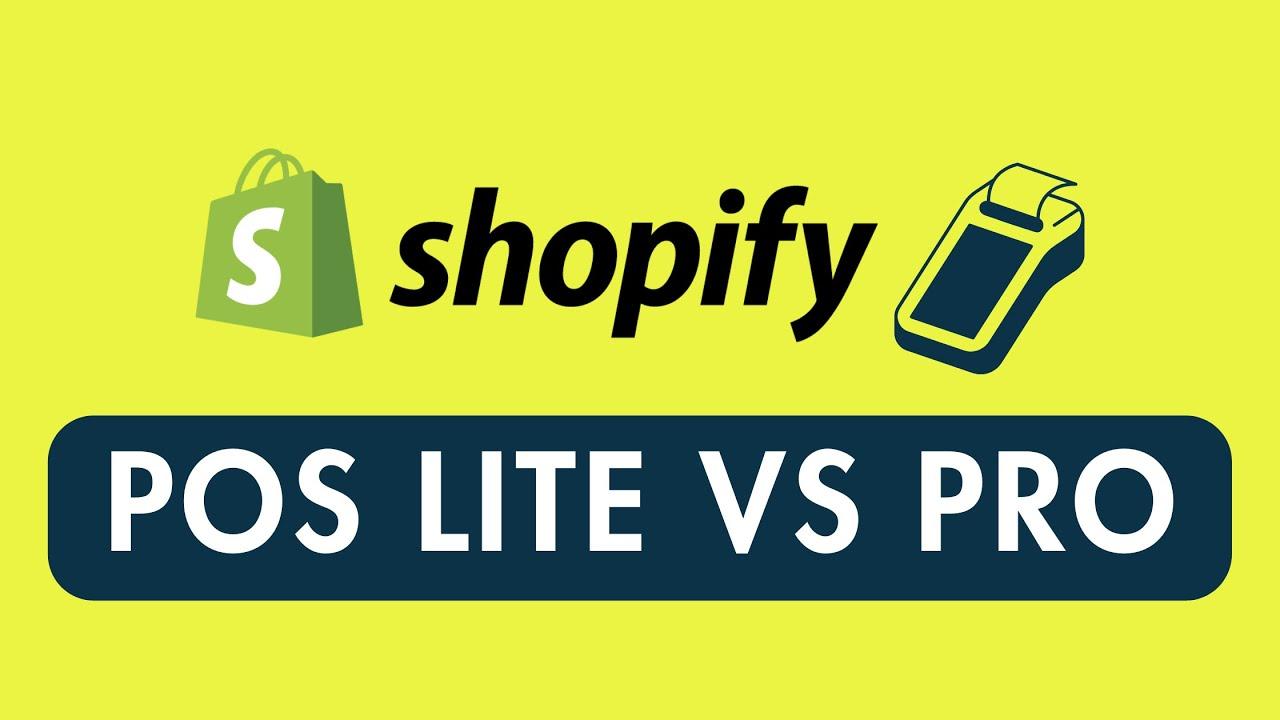
Shopify Lite: Is it the Right Fit for You?
If you’re considering launching an online store but don’t want to dive into a full-fledged ecommerce platform, Shopify Lite might be the perfect solution for you. This plan allows you to add ecommerce functionality to an existing website or sell on social media platforms,making it a versatile option for small businesses or individual sellers looking for a cost-effective way to start selling online.
Here are a few key features that make Shopify Lite worth considering:
- Simple Integration: Easily add a “Buy Button” to any website, blog, or social media platform.
- Mobile-Friendly: Manage your store on the go with a powerful mobile app.
- Secure Payments: Accept credit card payments with Shopify’s secure checkout system.
- Unlimited Products: List as many products as you want without any additional fees.
However, while Shopify Lite offers a lot of conveniences, it’s essential to weigh its limitations against your business needs. Unlike higher-tier plans, shopify Lite does not include a full online store or website, which means you’ll need an existing outlet to sell from. This can be a drawback if you’re aiming to build a dedicated online presence.
Consider the following before making a decision:
| Pros | Cons |
|---|---|
| Cost-effective for small businesses | Limited features compared to higher plans |
| Great for social media selling | Requires an existing website or platform |
| Easy to set up and manage | No built-in online store |
Ultimately, the choice of whether Shopify Lite is right for you comes down to your specific business model, budget, and growth plans. If you’re looking to dip your toes into ecommerce without a significant commitment, it might very well be a fantastic choice. Conversely,if you envision a fully-fledged online store in your future,you might want to consider other Shopify plans or even alternatives that offer more comprehensive features from the get-go.

Consideration factors for Choosing the Best Alternative
When exploring alternatives to Shopify for your eCommerce store in 2021, it’s crucial to assess various factors that can significantly impact the long-term success of your business. Each platform offers unique features and capabilities,and understanding these can help you make an informed choice.
First and foremost, ease of use is a vital consideration. Look for platforms that provide an intuitive interface and user-friendly tools. This will not only save you time but also reduce the learning curve for you and your team. A platform that allows you to get up and running quickly will enable you to focus more on growing your business rather than wrestling with technology.
Next, consider the cost structure associated with different alternatives. Some platforms may offer lower initial fees but come with hidden costs that can arise as your business scales, such as transaction fees or higher subscription rates. Evaluate the total cost of ownership by looking at:
- Monthly subscription fees
- Transaction fees per sale
- Costs of additional apps or features
Another critical factor is the available integrations.Your eCommerce platform should seamlessly integrate with essential tools like payment gateways, shipping providers, and inventory management systems. A rich library of integrations can streamline your operations and enhance your customer experience. Make sure to check:
- Compatibility with your current tools
- Availability of third-party apps
- API access for custom integrations
Don’t overlook the importance of customer support. Reliable support can be a lifesaver when issues arise. Investigate whether the platform provides 24/7 assistance, live chat, or phone support. Additionally, look for a robust community forum where you can exchange ideas and solutions with other users.
Lastly, consider the scalability of the platform. As your business grows, your eCommerce solution should be able to grow with you.Look for features that allow easy upgrades, increased product listings, and enhanced performance without requiring a complete overhaul of your existing setup. A scalable platform will help you avoid the hassle of migrating to a new solution as your needs change.
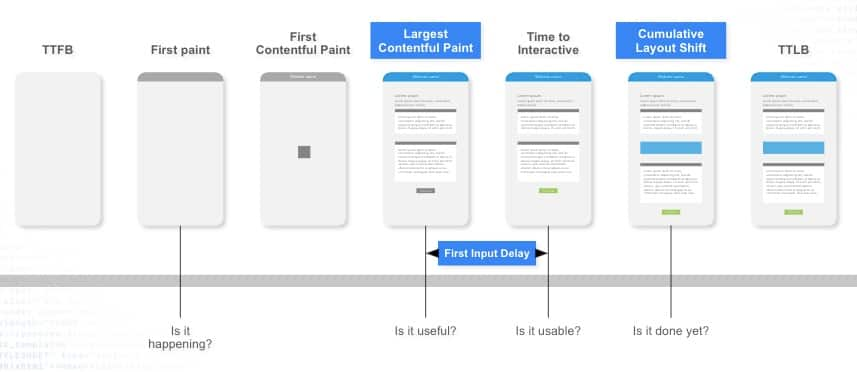
real User Experiences: What Retailers are Saying
what Retailers Are Saying
many retailers have taken the plunge to explore alternatives to Shopify, and the feedback has been overwhelmingly positive. One common theme among users is the flexibility that these platforms offer. Retailers appreciate the ability to customize their stores without being tied to strict templates, which can often feel limiting. As one retailer put it, “Switching to an alternative gave me the freedom to make my store truly reflective of my brand.”
Another significant point raised by users is the cost-effectiveness of various platforms. several merchants noted that they could save significant amounts in monthly fees, especially when compared to shopify’s pricing structure. For instance, users of WooCommerce have commented on how they can utilize a range of free plugins, which enhances their store’s functionality without breaking the bank. One store owner remarked, “I invested the savings into marketing, which has really paid off!”
Customer support is also a crucial factor that users highlighted. Retailers have expressed satisfaction with the personalized support they receive from alternative platforms. Unlike the sometimes generic assistance from larger companies, many alternatives provide tailored guidance that helps merchants navigate the challenges of running an online store. As one user shared, “Having a dedicated support agent made all the difference when I was launching my store.”
To provide a clearer picture, here’s a quick comparison of what users are saying about some popular Shopify alternatives:
| Platform | Flexibility | Cost | Support |
|---|---|---|---|
| WooCommerce | Highly Customizable | Low Initial Costs | Responsive Chat Support |
| BigCommerce | Extensive Built-in features | Mid-range Pricing | 24/7 Phone support |
| Squarespace | Beautiful Templates | Higher Monthly Fee | Email & Chat support |
When it comes to ease of use, many retailers have found platforms like Wix and Squarespace to be particularly beginner-friendly. New store owners often rave about the intuitive interfaces and the streamlined setup processes. “I had my store up and running in no time!” said a satisfied Wix user.This ease of use has allowed merchants to focus more on their products and marketing strategies rather than getting bogged down in technical details.
Making the Switch: Tips for Transitioning to a New Platform
switching to a new platform can seem daunting,but with the right approach,you can make the transition seamless and even exciting. First and foremost, evaluate your current needs. Take a moment to list out the features you enjoy in Shopify and those that you feel are lacking. This will help you identify which alternative platforms can best meet your requirements.
Next, consider the migration process. Many platforms offer tools or services to help you transfer your data smoothly. Before you make the final decision, research what each alternative provides in terms of support during the migration phase. A platform that offers comprehensive assistance can save you significant time and stress.
Another critical factor to keep in mind is training and onboarding. Once you’ve chosen a new platform, invest time in familiarizing yourself with its features. Most platforms provide tutorials, webinars, and community forums.Taking advantage of these resources can accelerate your learning curve and help you navigate your new environment more confidently.
Don’t forget to inform your customers about the transition. A simple email or a notice on your website will go a long way in keeping them in the loop. Highlight any new features or benefits they can expect, which can increase anticipation and retention. Always remember, communication is key!
| Platform | Key Features | Best For |
|---|---|---|
| WooCommerce | Highly customizable, extensive plugins | WordPress users |
| BigCommerce | No transaction fees, built-in features | Large inventories |
| Squarespace | Beautiful templates, all-in-one | Design-focused brands |
lastly, after you’ve transitioned, keep a close eye on your performance metrics. This will help you identify any issues early on and adjust your strategy accordingly. Transitioning to a new platform is not just about change; it’s about growth and enhancing your ecommerce journey.
Frequently Asked Questions (FAQ)
Q&A: Best Shopify Alternatives for Ecommerce Stores in 2021
Q: Why should I consider alternatives to Shopify for my eCommerce store?
A: Great question! while Shopify is a popular choice, it’s not the only option out there. Alternatives can offer different features, pricing structures, and customization options that may better fit your specific business needs. Whether you’re looking for lower fees, more control over your design, or unique features tailored to your niche, exploring alternatives can be a game-changer for your eCommerce success!
Q: What are some of the top Shopify alternatives you recommend for 2021?
A: There are several excellent alternatives worth considering! Some of the top contenders include WooCommerce, BigCommerce, Wix eCommerce, Magento, and Squarespace. Each of these platforms has its own strengths, whether you need a robust plugin system, scalability for larger businesses, or user-friendly design tools.Q: Is WooCommerce a good choice for beginners?
A: Absolutely! WooCommerce is great for beginners, especially if you’re already familiar with WordPress. It’s highly customizable, and there are countless plugins to enhance your store’s functionality.Plus, you have complete control over your website. Just keep in mind that, while it’s user-friendly, you may need some time to learn the ropes if you’re new to WordPress.
Q: What about BigCommerce? Is it suitable for larger businesses?
A: Yes, BigCommerce is an excellent option for larger businesses or those anticipating growth. It offers robust built-in features and scalability, which means it can support your business as it expands. Plus, it’s designed to handle high-volume sales without compromising on performance, making it a solid choice for established brands.Q: I’ve heard a lot about Wix for eCommerce. Is it really a viable alternative?
A: Definitely! Wix has come a long way in enhancing its eCommerce capabilities. It’s incredibly user-friendly, making it perfect for those who want to set up their store quickly without a steep learning curve. The drag-and-drop interface allows for beautiful design customization, and it offers a range of templates to suit different styles and products.
Q: How does Magento compare with Shopify?
A: Magento is a powerhouse in the eCommerce space, particularly for businesses that require extensive customization and flexibility. However, it’s worth noting that it comes with a steeper learning curve and may require more technical know-how or a developer on hand. If you’re looking to build a highly tailored experience or run a large-scale operation, Magento might be your best bet.
Q: Are there any cost-effective alternatives that I should consider?
A: Absolutely! Platforms like Squarespace and wix offer competitive pricing, especially for small to medium-sized businesses.They provide intuitive design tools and essential eCommerce functionality at a lower cost compared to Shopify. For those who are just starting out or working with a limited budget, these options are fantastic.
Q: How do I decide which platform is right for my needs?
A: The best approach is to evaluate your specific needs. Consider factors like your budget, level of technical expertise, desired features, and long-term growth plans. Many platforms offer free trials or demo versions, so take advantage of those to see which one feels right. Remember, the right platform should empower your business, not limit it!
Q: why should I take the time to explore alternatives to Shopify?
A: Exploring alternatives to Shopify can unlock new opportunities for your eCommerce store. By finding a platform that aligns with your unique business model,you can save money,enhance your site’s functionality,and create a more enjoyable shopping experience for your customers. So, take that leap and discover the fantastic options available in 2021—you might just find the perfect fit for your eCommerce journey!
In Retrospect
As we wrap up our exploration of the best Shopify alternatives for your eCommerce store in 2021, it’s clear that there are plenty of fantastic options out there to fit every business model and budget. Whether you’re a budding entrepreneur or a seasoned seller looking to switch things up, the right platform can make all the difference in your online success.
Remember, the best choice ultimately depends on your unique needs. Do you prioritize ease of use? Or perhaps you’re looking for robust customization options? Whatever your priorities may be, take the time to explore the platforms we discussed and consider how each one aligns with your vision for your store.
Switching platforms might feel daunting, but this could be the opportunity you’ve been waiting for to elevate your eCommerce game. Don’t hesitate to dive deeper, take advantage of free trials, and even reach out to communities and forums for feedback. After all, you deserve a platform that not only supports your business but empowers you to grow and succeed.
so,are you ready to take the plunge and find a Shopify alternative that truly resonates with you? The eCommerce world is ripe with possibilities,and with the right tools at your disposal,there’s no limit to what you can achieve. Happy selling!

